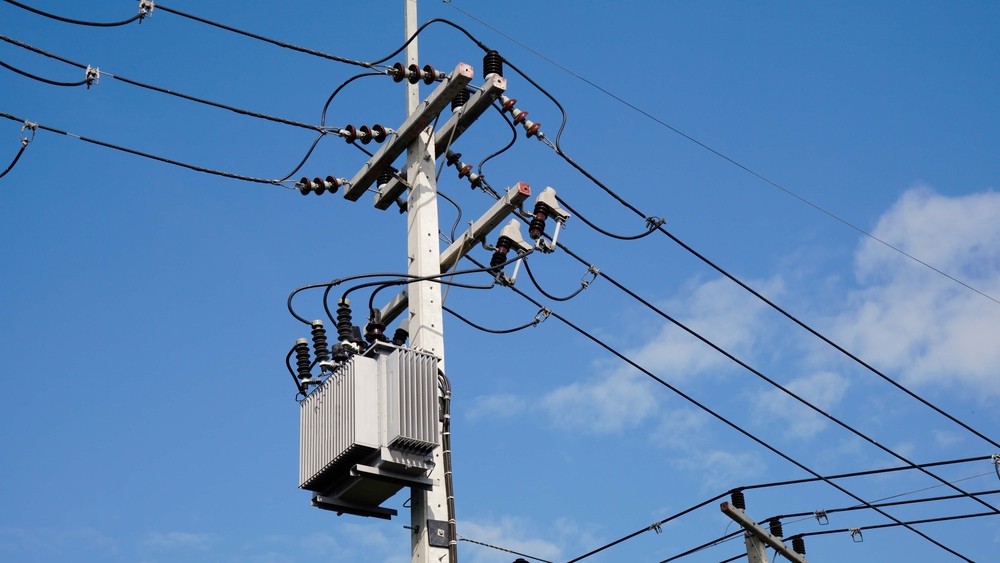Transformers are incredibly important for electricity, playing a crucial role in shaping the way power is distributed and utilized. In this blog, we will delve into transformers, understanding their fundamental principles, various types, components, and the essential safety measures one must follow when dealing with these electrical marvels.
What is a Transformer?
At its core, a transformer is a device that transfers electrical energy between two or more circuits through electromagnetic induction. This innovative technology allows for the efficient transmission of power over long distances, making it a cornerstone in electrical infrastructure.
How Do Transformers Work?
Transformers operate on the principles of electromagnetic induction. When an alternating current (AC) flows through the primary coil, it generates a magnetic field around it. This magnetic field induces a voltage in the secondary coil, facilitating the transfer of electrical energy from one circuit to another. This process is essential for stepping down, or up, voltage levels as required in power distribution. Across vast power grids, transformers act as silent sentinels, modulating voltage levels with precision to ensure a seamless and reliable supply of electrical energy to end-users.
The Purpose of Transformers:
Transformers serve a dual purpose: stepping up voltage for efficient long-distance transmission and stepping down voltage for safe consumption in homes and businesses. By maintaining optimal voltage levels, transformers contribute to grid stability, preventing fluctuations that could lead to disruptions in power supply. This stability is paramount for the seamless functioning of electrical systems and the preservation of electronic equipment connected to the grid.
Beyond homes and businesses, transformers are vital components in industrial settings. They provide the high voltage required for industrial processes, contributing to the production of goods, services, and the overall economic vitality of regions.
Different Types of Transformers:
There are various types of transformers, each designed for specific applications. Power transformers are crucial for transmitting electricity across vast distances, while distribution transformers ensure that power is distributed efficiently to homes and commercial establishments. Other specialized transformers include instrument transformers, autotransformers, and potential transformers, each tailored for specific roles in the electrical system.
1. Power Transformers: Fueling Vast Networks:
At the core of large-scale power transmission networks, power transformers take center stage. These robust transformers are designed for the monumental task of stepping up voltage for efficient long-distance transmission. In commercial and industrial setups, where power demands are substantial, power transformers ensure that electricity generated at power plants traverses vast distances with minimal energy loss, catering to the colossal energy needs of industries and large facilities.
2. Distribution Transformers: Nurturing Local Networks:
Closer to end-users, distribution transformers come into play, facilitating the last mile of the power journey. These transformers step down the voltage to levels suitable for safe consumption in commercial and industrial buildings. They provide the final voltage transformation in the electric power distribution system. Found in substations and utility boxes, distribution transformers efficiently channel electricity into the grids that power office complexes, manufacturing plants, and various industrial facilities.
3. Instrument Transformers: Precision in Measurement:
These transformers, including current and voltage transformers, serve a crucial role in measuring and monitoring electrical parameters. In commercial and industrial applications, where precise measurements are essential for equipment functionality and energy management, instrument transformers provide reliable data for control systems and monitoring devices.
4. Autotransformers: Efficient Voltage Adjustment:
Autotransformers, with their single-winding design, offer a unique solution for adjusting voltage levels efficiently. In industrial setups where voltage variations are encountered, autotransformers play a pivotal role in providing a cost-effective means of voltage adjustment, ensuring that electrical equipment operates optimally under varying conditions.
5. Potential Transformers: Ensuring Safety in Measurement:
Potential transformers, also known as voltage transformers, cater to the safety and accuracy of voltage measurement. In commercial and industrial environments where the precision of voltage readings is critical for system integrity and safety, these transformers step down high voltages to levels suitable for measurement instruments, ensuring the reliability of voltage data.
6. Specialty Transformers for Industry-Specific Needs:
Beyond these core types, there are specialty transformers tailored for specific industrial applications. For instance, rectifier transformers are designed for industries employing rectifiers in their processes, ensuring a stable and controlled DC power supply.
Parts of a Transformer
Understanding the anatomy of a transformer is essential for grasping its functionality. Transformers consist of an iron core, primary and secondary coils, and insulation. The core is typically made of laminated steel to enhance magnetic flux, while insulation prevents electrical leakage and ensures the safety of the system.
1. Iron Core
Typically crafted from laminated steel, the iron core serves as a conduit for the magnetic flux generated by the flow of alternating current (AC) through the primary coil. The laminated structure minimizes energy losses due to eddy currents, enhancing the efficiency of the magnetic coupling process.
2. Primary Coil
Enveloping the iron core is the primary coil, the initial conductor through which the alternating current flows. The dynamic interaction between the primary coil and the magnetic field generated by the current sets the transformative process in motion. As the current fluctuates, it induces a magnetic field in the core, creating the foundation for the subsequent transfer of energy.
3. Secondary Coil
Adjacent to the primary coil is the secondary coil, which is intricately connected to the magnetic dance orchestrated by the primary coil. The magnetic field induced by the primary coil acts upon the secondary coil, eliciting the generation of voltage within it. This induced voltage becomes the conduit through which electrical energy traverses from the primary to the secondary side, ready for distribution or further transformation.
4. Insulation
Integral to the transformer's design is the insulation that encases both the coils and the core. This insulation is a crucial safety feature, preventing electrical leakage and ensuring the integrity of the system. Insulation materials, often composed of materials like oil-impregnated paper or synthetic materials, act as barriers, isolating different components to safeguard against electrical faults and ensure the longevity of the transformer.
5. Windings
Within the coils lie windings, which are essentially the individual turns of wire forming the primary and secondary coils. The precise arrangement and number of windings determine the turns ratio, a critical factor influencing the voltage transformation capabilities of the transformer. These windings, carefully arranged and insulated, ensure the efficient flow of electrical currents through the coils.
6. Tap Changer
In some transformers, especially those designed for variable voltage applications, a tap changer is incorporated. This adjustable component allows for modifications to the turns ratio, enabling adjustments to the output voltage, as needed. Tap changers contribute to the adaptability of transformers in accommodating varying voltage requirements.
7. Tank and Cooling System
For larger transformers, a tank houses the core and coils, often filled with insulating oil to enhance cooling and prevent overheating. The cooling system, which may include fans or radiators, regulates the temperature within the transformer, ensuring optimal performance and preventing damage due to excessive heat.
Safety Tips When Working with Transformers
Working with transformers demands a keen awareness of safety protocols. Always disconnect the power supply before performing any maintenance or repairs. Regular inspections are crucial to identifying potential issues, and protective gear, such as insulated gloves, suit and eyewear should be worn when handling transformers. Adhering to safety guidelines reduces the risk of electrical accidents and ensures a secure working environment.
In conclusion, transformers are the unsung heroes of our electrical infrastructure, silently enabling the seamless transmission and distribution of power. By understanding their workings, purposes, types, components, and adhering to safety measures, we can appreciate the vital role transformers play in powering our modern world. For expert guidance and innovative solutions in transformer technology reach out to the professionals at MTA, your dedicated partner providing excellence and innovation in the field of electrical engineering and testing.

